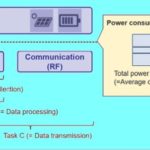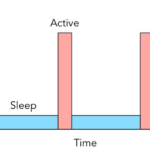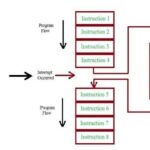The new MCX portfolio of microcontrollers from NXP is designed to advance innovation in smart homes, smart factories, smart cities and across many emerging industrial and IoT edge applications. The portfolio includes four series of devices built on a common platform and is supported by the widely adopted MCUXpresso suite of development tools and software. This combined offering allows developers to maximize software reuse across the portfolio to speed development. The portfolio also features the first instantiation of NXP’s new, specialized neural processing unit (NPU) for accelerating inference at the edge, delivering up to 30x faster machine learning throughput compared to a CPU core alone.
Driven by the proliferation of edge devices, the MCU has evolved dramatically over the last few decades. While they are at the heart of many of today’s edge applications, the next generation  of intelligent applications will require a new class of MCUs that allow developers to navigate a complex landscape of power, performance and security requirements, as well as connectivity options, while balancing total system cost and energy efficiency. Built on a common foundation of core technologies and supported by a unified software suite for maximal software reuse, the MCX portfolio will enable the flexibility needed to address this challenge. The breadth of the MCX portfolio allows developers to select devices that best fit their application needs, freeing them to invest in differentiating aspects of their design.
of intelligent applications will require a new class of MCUs that allow developers to navigate a complex landscape of power, performance and security requirements, as well as connectivity options, while balancing total system cost and energy efficiency. Built on a common foundation of core technologies and supported by a unified software suite for maximal software reuse, the MCX portfolio will enable the flexibility needed to address this challenge. The breadth of the MCX portfolio allows developers to select devices that best fit their application needs, freeing them to invest in differentiating aspects of their design.
The four series in the MCX portfolio are designed for ease of use, to simplify migration and to scale up or down as needed with maximal software reuse to minimize development cost. The portfolio is based on high-performance Arm Cortex-M cores and integrates a comprehensive set of peripherals for design flexibility. MCX devices feature up to 4 MB of on-chip flash memory, low power cache and advanced memory management controllers, plus up to 1MB of on-chip SRAM to further enhance real-time performance of edge applications.
Machine learning and run-time inference will be supported by NXP’s eIQ ML software development environment. Developers can utilize the easy-to-use tools offered by eIQ to train ML models targeting either the NPU or the CPU core and deploy them on the MCU. MCX families that are built following NXP’s security-by-design approach will offer secure boot with an immutable root-of-trust, hardware accelerated cryptography and, on select families, a built-in EdgeLock secure subsystem.
The MCX N Advanced series is designed for secure, intelligent applications, with families that include an integrated EdgeLock secure subsystem and dedicated NPU with a high efficiency compute architecture for real-time inference.
The MCX A Essential series is optimized to provide critical functionality for a broad range of applications such as motor control where cost constraints, advanced analog capabilities such as high-precision data converters and fast time to market are key considerations.
The MCX W Wireless series offers low-power narrowband connectivity, including Bluetooth Low Energy. Designed to simplify adding wireless connectivity to IoT devices, its energy-efficient radio helps extend the battery life of small connected systems.
The MCX L Ultra-Low Power series is designed for power-critical applications. With one of the industry’s lowest static and dynamic power consumption, these devices will help extend battery life significantly compared to traditional MCUs.






